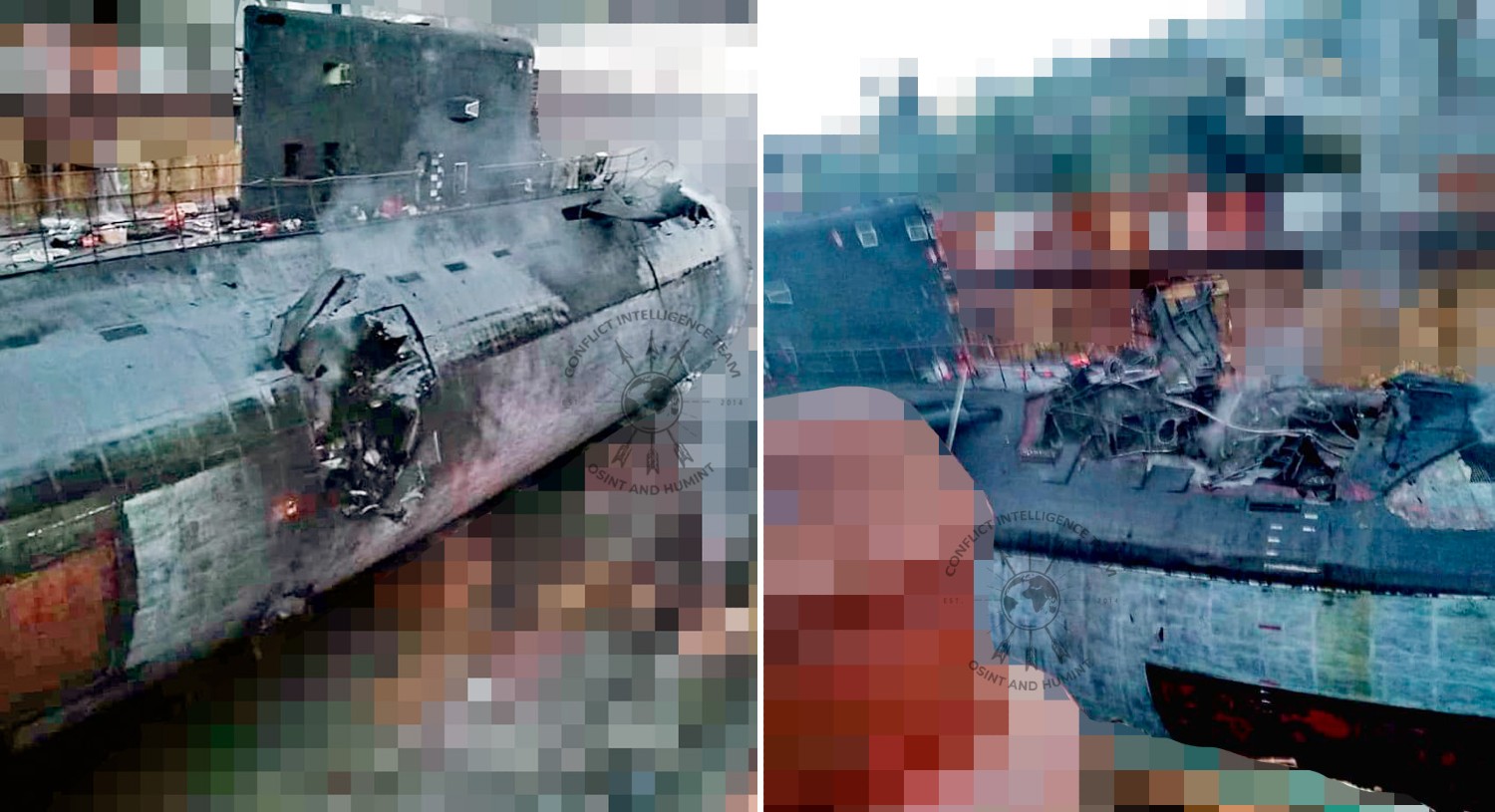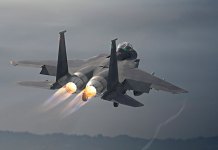The recent Ukrainian strike on Crimea has demonstrated the decisive impact of US-supplied ATACMS missiles, accomplishing what British-supplied Storm Shadow missiles could not: sinking the Russian Black Sea Fleet’s Kilo-class submarine.
In the latest review released on July 7, UK Defence Intelligence has analyzed the recent Ukrainian strike on Crimea, which has likely resulted in the sinking of the Russian Rostov-on-Don.
That attack marks the second successful attack on the submarine by Ukrainian forces. The Rostov-on-Don was first targeted in September 2023 when Ukrainian forces reportedly utilized air-launched Storm Shadow standoff missiles.
These missiles inflicted significant damage on the submarine, leaving it “damaged beyond repair.” At the time, military analysts speculated that the damage was extensive enough to warrant the submarine being written off, with any potential repair efforts predicted to take years.
Contrary to these predictions, the submarine, which cost approximately $300 million, was reportedly repaired and even tested in Sevastopol harbor by Russian forces.
Latest Defence Intelligence update on the situation in Ukraine – 7 August 2024.
Find out more about Defence Intelligence's use of language: https://t.co/PwPJnsVZdN #StandWithUkraine 🇺🇦 pic.twitter.com/uO4oCAU7nP
— Ministry of Defence 🇬🇧 (@DefenceHQ) August 7, 2024
However, the latest attack utilized US-supplied ATACMS missiles, which may have proved more effective than the Storm Shadow. According to UK Defence Intelligence, this recent strike led to the submarine’s sinking.
The Ukrainian military has claimed that the submarine was struck while stationed at the Sevastopol port on the Crimean Peninsula. The operation also resulted in the destruction of several S-400 anti-aircraft missile systems.
UK Defence Intelligence noted that while the submarine was severely damaged by the previous attack, it was likely not fully repaired. The latest strike is described as “the final chapter for the submarine,” with refurbishment deemed cost-prohibitive compared to building a new vessel.
The sinking of the Rostov-on-Don is a notable victory for Ukrainian forces and a significant morale booster. However, UK intelligence suggested that this development is unlikely to substantially affect Russia’s capability to launch long-range strikes from the Black Sea.

Instead, the strike underscores the growing risks to Russian forces in Crimea and may compel Russia to reconsider any plans to redeploy substantial maritime forces to the region.
The Rostov-on-Don, commissioned in 2014, was one of four KILO-class submarines in the Black Sea Fleet and had been armed with Kalibr land-attack cruise missiles, which have been extensively used against targets in Ukraine.
ATACMS Better Than Storm Shadow?
The ATACMS (Army Tactical Missile System) and Storm Shadow are two advanced missile systems with different operational roles and capabilities. Developed by Lockheed Martin and MBDA, respectively, they have become crucial in Kyiv’s military strategies against Russia.
The ATACMS, a surface-to-surface missile system, was developed by Lockheed Martin and first deployed in the early 1990s. It is launched from ground-based platforms such as the M270 Multiple Launch Rocket System (MLRS) and the High Mobility Artillery Rocket System (HIMARS). Designed for long-range precision strikes, the ATACMS can target various surface assets with notable accuracy.
In contrast, the Storm Shadow, developed by MBDA, is an air-launched cruise missile. Entering service in the early 2000s, it is designed to be deployed from aircraft and targets high-value, hardened assets deep within enemy territory. It boasts long-range capabilities and advanced navigation systems and focuses on penetrating fortified positions.
Unlike the ATACMS, which is surface-launched and can maneuver during flight, the Storm Shadow is an air-to-surface missile.
Fabian Hoffmann, a doctoral research fellow at the University of Oslo, Norway, pointed out that the ATACMS is notably faster, reaching targets up to 250 kilometers (155 miles) away in approximately five minutes.

In comparison, the Storm Shadow and its counterpart, the SCALP, require around 15 minutes to cover a similar distance. This speed is critical for engaging time-sensitive targets, making the ATACMS particularly advantageous in dynamic combat scenarios.
The strategic impact of ATACMS is further highlighted in an article by Zuzanna Gwadera and Timothy Wright on the Military Balance Blog, published by the International Institute for Strategic Studies (IISS).
The authors argued that ATACMS provides a better option for Ukraine compared to the Storm Shadow. Their analysis pointed out successful Ukrainian strikes on Russian military assets in Crimea, including the destruction of two MiG-31 aircraft, the sinking of the Tsiklon missile corvette, and the obliteration of the Kerch ferry crossing.
These successes were enabled by the extended-range ATACMS, which can strike targets up to 300 kilometers away and is equipped with either cluster or unitary warheads.
- Contact the author at ashishmichel(at)gmail.com
- Follow EurAsian Times on Google News




